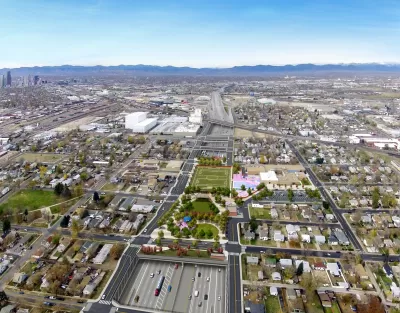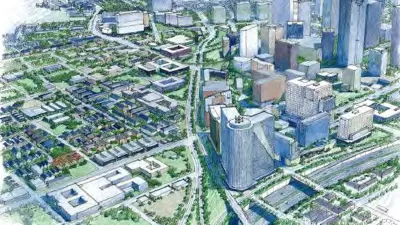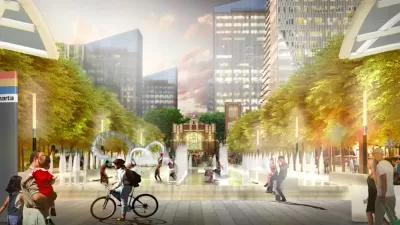The first comprehensive manual for planning, funding, and building a freeway cap is put online for review and comment.

Nearly every major city is contemplating reconnecting neighborhoods divided by a highway built under The Federal Highway Act. Many cities already have one or more parks or civic buildings built over FHWA funded highways. Some of the more notable projects include the Rose Kennedy Fitzgerald Kennedy Greenway (Boston aka “The Big Dig”), the Klyde Warren Park (Dallas), Bartle Hall Convention Center (Kansas City), and Freeway Park (Seattle). However, as cities are again popular places to live, there has been even greater interest in covering the highways that divide and pollute urban neighborhoods. Many of these highways were built in trenches that evoke visions of covering them with parks, civic buildings, or even private development.
Freeway benefits to the surrounding communities include:
- Increased property values
- Increased density and housing
- Increased retail sales
- Increased hotel development and occupancy
- Increased area jobs
- Increased property tax, payroll tax, hotel tax, and sales tax revenue
- Improved park and recreational opportunities
- Improved air quality
However, there is little documentation on how to accomplish these large and daunting projects. This is the circumstance confronting participants of local movements to build over a highway or freeway, and this was the circumstance encountered by the author of a draft book on the subject as he participated in a San Diego movement to reconnect the city’s urban park (Balboa Park) and urban neighborhoods with downtown over Interstate 5. He decided to document what he learned in a guide book. He has put his first draft online to share what he has learned and to source additional information from those who might have useful information to contribute to the effort.
FULL STORY: Book: How to Build a Freeway Cap

Study: Maui’s Plan to Convert Vacation Rentals to Long-Term Housing Could Cause Nearly $1 Billion Economic Loss
The plan would reduce visitor accommodation by 25,% resulting in 1,900 jobs lost.

North Texas Transit Leaders Tout Benefits of TOD for Growing Region
At a summit focused on transit-oriented development, policymakers discussed how North Texas’ expanded light rail system can serve as a tool for economic growth.

Using Old Oil and Gas Wells for Green Energy Storage
Penn State researchers have found that repurposing abandoned oil and gas wells for geothermal-assisted compressed-air energy storage can boost efficiency, reduce environmental risks, and support clean energy and job transitions.

Santa Barbara Could Build Housing on County Land
County supervisors moved forward a proposal to build workforce housing on two county-owned parcels.

San Mateo Formally Opposes Freeway Project
The city council will send a letter to Caltrans urging the agency to reconsider a plan to expand the 101 through the city of San Mateo.

A Bronx Community Fights to Have its Voice Heard
After organizing and giving input for decades, the community around the Kingsbridge Armory might actually see it redeveloped — and they want to continue to have a say in how it goes.
Urban Design for Planners 1: Software Tools
This six-course series explores essential urban design concepts using open source software and equips planners with the tools they need to participate fully in the urban design process.
Planning for Universal Design
Learn the tools for implementing Universal Design in planning regulations.
Ascent Environmental
Borough of Carlisle
Institute for Housing and Urban Development Studies (IHS)
City of Grandview
Harvard GSD Executive Education
Toledo-Lucas County Plan Commissions
Salt Lake City
NYU Wagner Graduate School of Public Service





























